Russia's Lancet drone is hampering Ukraine's counteroffensive, smashing Western gear and exposing poor air defenses
Ukraine's counteroffensive is underway, and the destruction is evident.
Footage of destroyed Ukrainian vehicles is spreading, often attributed to the Lancet drone.
An expert told Insider that as Ukraine advances it's stretching its ability to deal with drone attacks.
In recent weeks Ukraine has been pushing hard to retake ground from Russia, as part of a sweeping counteroffensive.
The full picture is still emerging, but in places it has been a bruising experience.
Russian officials have gleefully shared videos of piled-up wreckage, and often cited as the cause the Russian-made Lancet drone.
The Lancet is a loitering munition made by a subsection of Russia's Kalashnikov arms manufacturer. It's new — first used in 2019 — and meant for precision strikes.
James Patton Rogers, a drone expert at the Cornell Tech Policy Institute and the University of Southern Denmark, said that the type being fielded by Russia in Ukraine is the Lancet-3, an upgraded version.
Rogers said it has a bigger payload than its predecessors — and can likely be operated in first-person view (FPV) for much better accuracy.
He also said the drones are most effective against artillery systems, lighter armored vehicles, and older tanks.
An account associated with the Russian-backed Donetsk People's Republic published a video Monday showing blasts on a cluster of vehicles which it attributes to Lancet strikes.
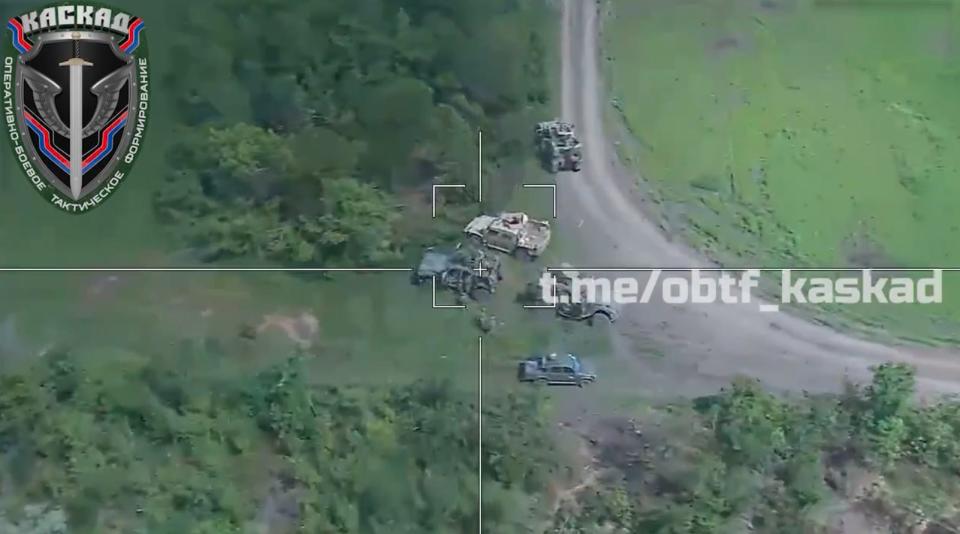
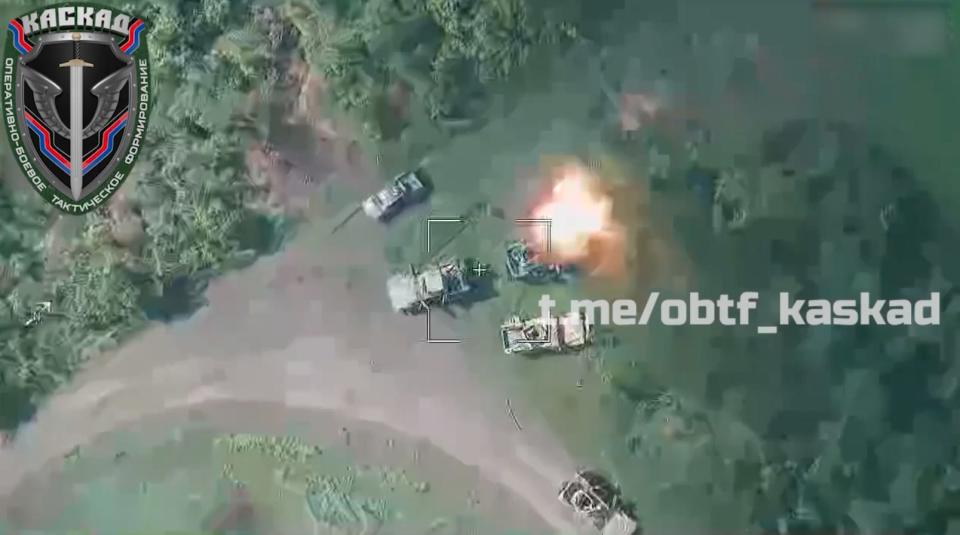
And Russian media went wild for a second video, which seemed to show a Lancet damaging part of a prized IRIS-T air-defense system provided to Ukraine by Germany.
Olga Skabeyeva, a prominent Russian state-media host, shared part of a report from the German newspaper Bild covering the destruction.
Vladimir Solovyov, another state-media personality, also gloated over the hit.
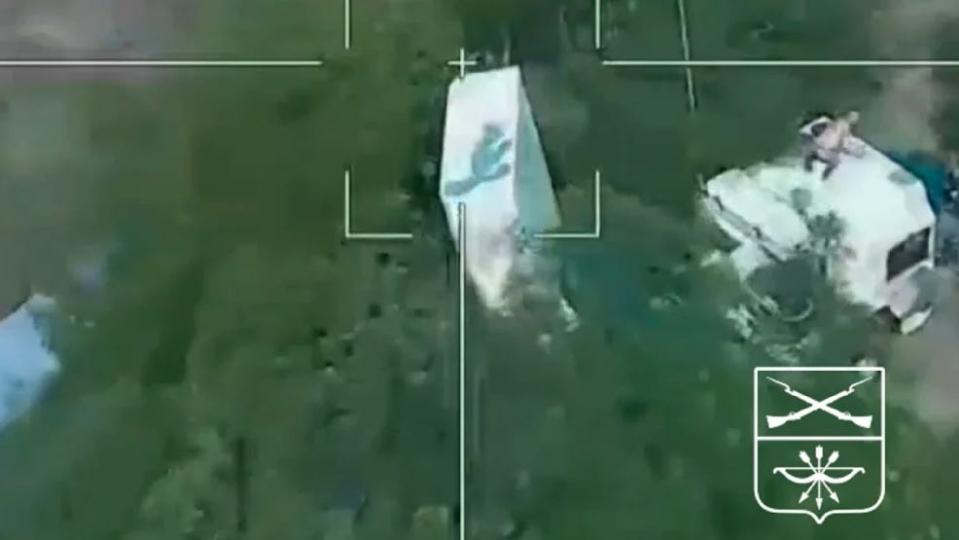
Skabeyeva cited Bild's analysis that the equipment was too close to the front line — some 16 miles away — and also not guarded by complementary systems that could stop a drone. (Bild shares a parent company, Axel Springer, with Insider.)
One Russian-affiliated Telegram channel posted a series of successive videos showing the FPV feed of drones cruising in to strike what appears to be the same group of three vehicles.
The channel didn't specify the type of drone used, but Patton Rogers said the visuals were consistent with the type of feed a Lancet could produce.
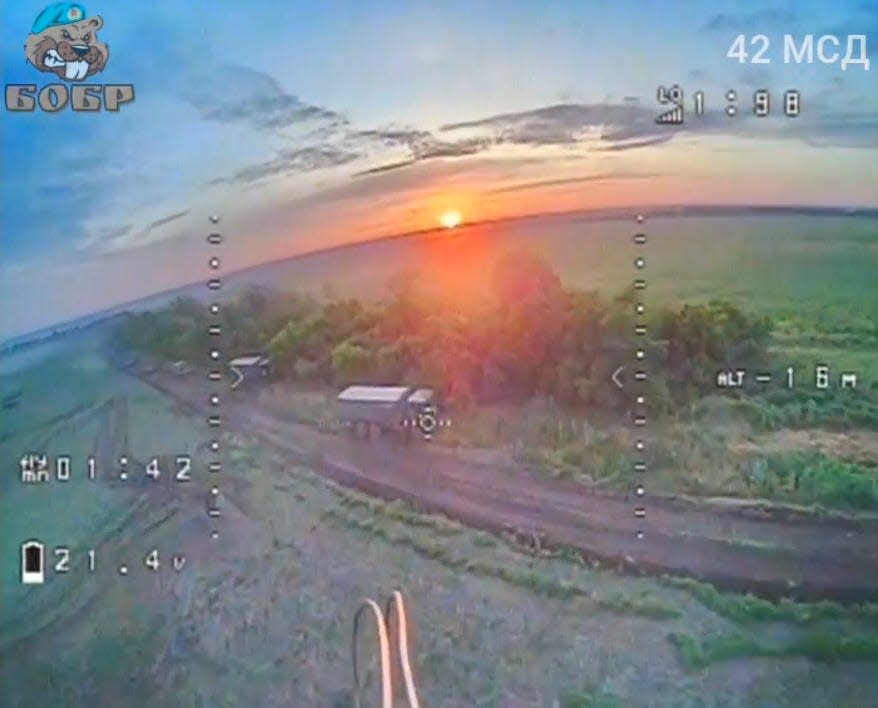
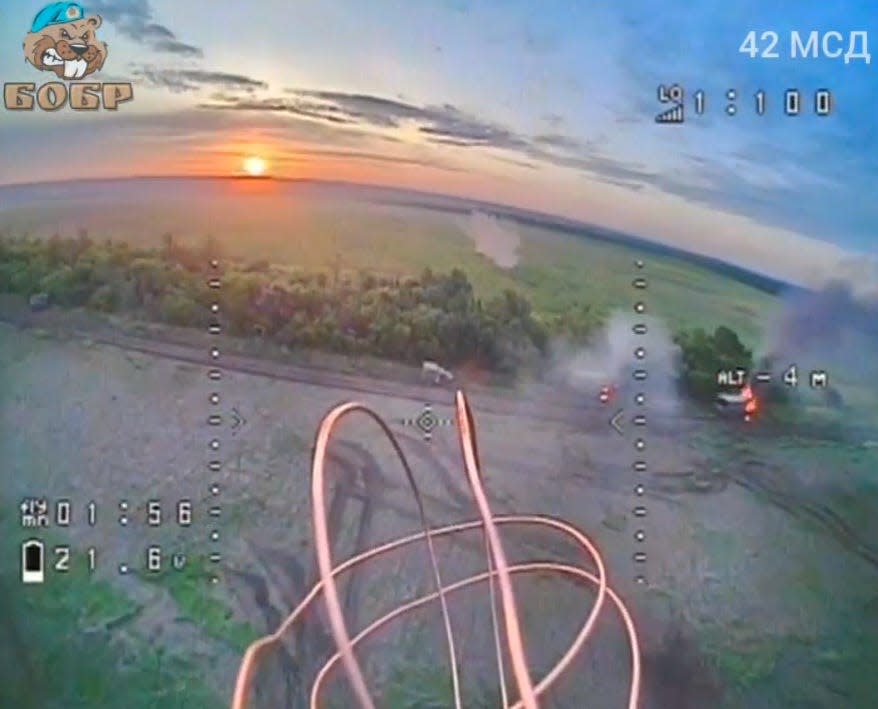
Some of the videos appear to show Lancet drones finishing off a vehicle after it was already abandoned or disabled by something else. Drones can be a good way to do that without needing to get too close.
This video, purporting to show a Leopard in the Zaporizhzhia region — a site of heavy fighting — fits that description.
Ukraine tends not to acknowledge individual military losses. But it is clear that Lancets are active and a threat — a post from last week hyping Ukraine's air defenses noted that 10 exploding drones had been shot down.
The post — which grouped Lancets and Iranian-made Shahed drones into a single category — did not say how many drones made it through.
Air defense has long been a problem for Ukraine — and as its forces move forward it becomes harder to give them coverage without putting valuable equipment at risk, as seen with the IRIS incident.
Julian Röpcke, the Bild reporter who covered the IRIS-T attack, noted on Monday morning an example of two more armored vehicles destroyed, likely by Lancets.
—Julian Röpcke🇺🇦 (@JulianRoepcke) June 12, 2023
"Sufficient air defense remains one of the biggest issues during Ukraine's offensive in the south," he said.
Patton Rogers, the drone expert, told Insider that the Lancet is "most certainly a thorn in the side of Ukrainian forces," but it is "by no means a war-winning weapon."
He noted that most of the videos showed the drones hitting lighter vehicles. He questioned whether Lancets alone could take out a heavy tank like a Leopard, given its thick armor.
"I wouldn't believe all the hype, especially when it comes to attacks on more advanced tanks and armored vehicles," he said.
"We should also note that we don't know how many of these new Lancet drones Russia has," he added. "Western sanctions have certainly made a dent in the Russian ability to produce large numbers of its most high-tech weapons."
Asked how Ukraine could best counter the Lancets, Patton Rogers said that commanders should be careful not to advance too quickly.
"Ukrainian forces must move slowly and in a calculated way in order to keep under the cover – the bubble – of counter-drone and ground-to-air defense systems," he said.
"Ukraine will also be utilizing its own ever longer range drone systems to hunt down and strike Lancet launch sites in order to destroy the missiles at source," he added.
Read the original article on Business Insider

 Yahoo News
Yahoo News 
